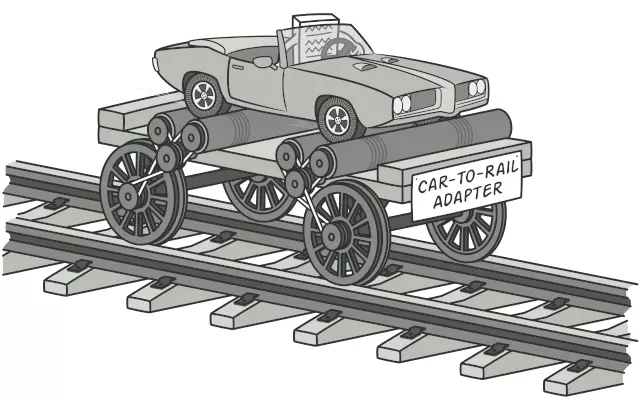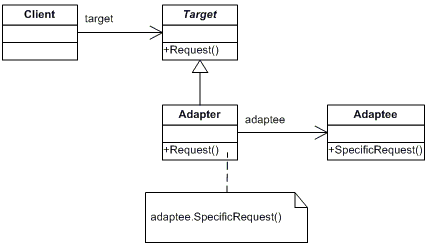
Design patterns are proven solutions to software design problems. They help improve code quality, promote reusability, and increase maintainability. We use them to save time and produce quality, extensible and flexible code. In this article, we are going to introduce the Adapter design pattern.
Adapter design pattern is a structural design pattern that connects two incompatible classes through an interface class. The Adapter pattern is useful when we want to create a class that can work with multiple incompatible classes.
The Adapter pattern consists of the following items:

The Adapter pattern can be implemented in two ways:
In the first method, the Adapter class inherits from the Adaptee class and obtains its features and can call its methods.
In the second method, the Adapter class defines an instance of Adaptee in its body that it can use.
In both methods, the Adapter class must implement the Itarget interface.
Below is an example of the Adapter pattern in C#:
// Target interface
public interface ITarget
{
void Request();
}
// Adaptee interface
public interface IAdaptee
{
void SpecificRequest();
}
// Adaptee implementation
public class Adaptee : IAdaptee
{
public void SpecificRequest()
{
Console.WriteLine("Adaptee method called");
}
}// Class adapter implementation
public class Adapter : Adaptee, ITarget
{
public void Request()
{
SpecificRequest();
}
}// Object adapter implementation
public class ObjectAdapter : ITarget
{
private IAdaptee _adaptee;
public ObjectAdapter(IAdaptee adaptee)
{
_adaptee = adaptee;
}
public void Request()
{
_adaptee.SpecificRequest();
}
}// Client code
public class Client
{
public void DoWork(ITarget target)
{
target.Request();
}
}
// Usage
var client = new Client();
// Class adapter usage
var adapter = new Adapter();
client.DoWork(adapter);
// Object adapter usage
var adaptee = new Adaptee();
var objectAdapter = new ObjectAdapter(adaptee);
client.DoWork(objectAdapter);In this example, we have an ITarget interface that the client uses. We also have an IAdaptee interface that should be adapted to ITarget. The Adaptee class is an implementation of the IAdaptee interface.
The Adapter class is an example that uses the first method of implementing this pattern. This class inherits from the Adaptee class and implements the ITarget interface. Then the Client can receive an instance of the Adapter and call the SpecificRequest method in the Adaptee through the Request method.
The ObjectAdapter class is an example that uses the second method of implementing this pattern. This class implements the ITarget interface and defines an instance object of the Adaptee. In this example, the Client calls the SpecificRequest method by calling the Request method through the object in the Adapter.
Finally, we see that without making any direct changes in the codes and only by creating an interface class, the connection between these two classes was possible.
To read about other design patterns, you can use the list below. There is also a code repository on GitHub that includes all the design patterns.

I am Reza Babakhani, a software developer. Here I write my experiences, opinions and suggestions about technology. I hope that what I write is useful for you.
leave a comment